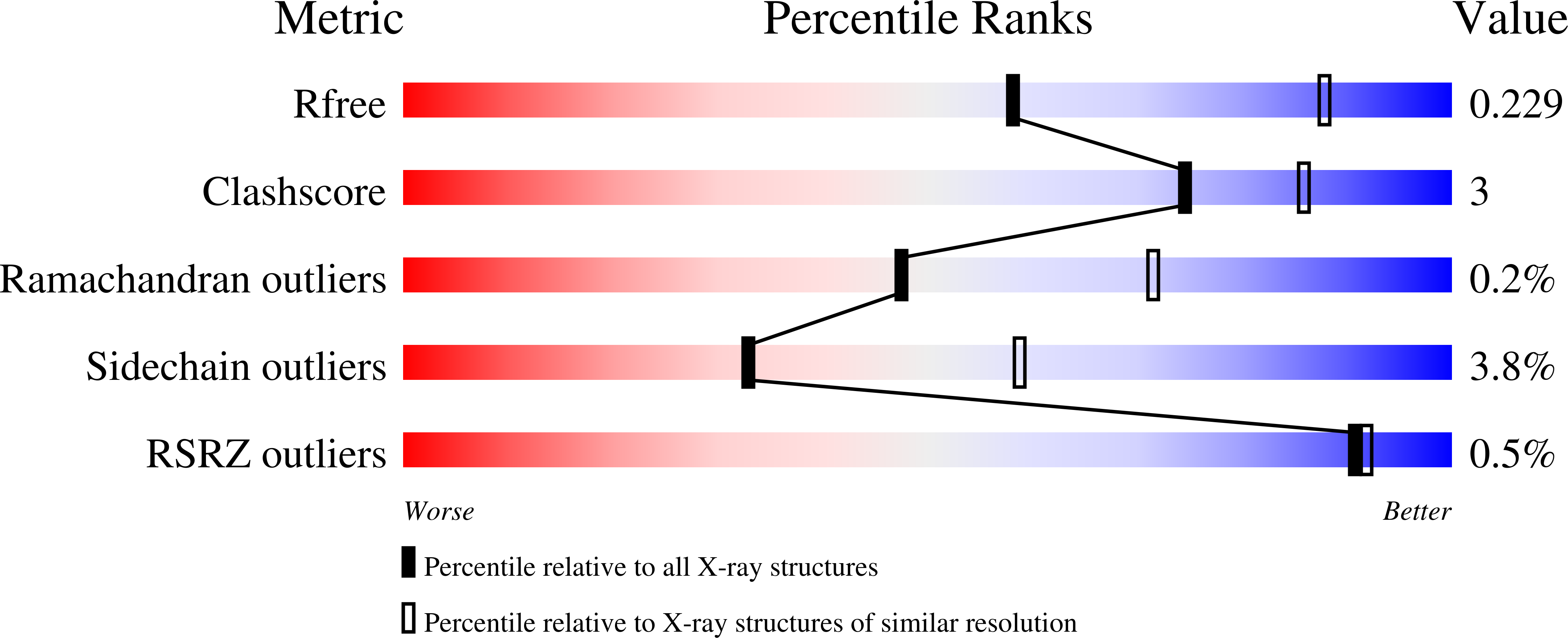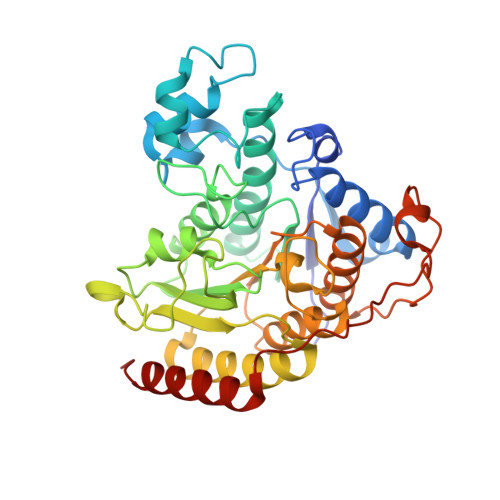Discovery of Highly Selective and Potent HDAC3 Inhibitors Based on a 2-Substituted Benzamide Zinc Binding Group.
Liu, J., Yu, Y., Kelly, J., Sha, D., Alhassan, A.B., Yu, W., Maletic, M.M., Duffy, J.L., Klein, D.J., Holloway, M.K., Carroll, S., Howell, B.J., Barnard, R.J.O., Wolkenberg, S., Kozlowski, J.A.(2020) ACS Med Chem Lett 11: 2476-2483
- PubMed: 33335670
- DOI: https://doi.org/10.1021/acsmedchemlett.0c00462
- Primary Citation of Related Structures:
7KBG, 7KBH - PubMed Abstract:
The selectivity of histone deacetylase inhibitors (HDACis) is greatly impacted by the zinc binding groups. In an effort to search for novel zinc binding groups, we applied a parallel medicinal chemistry (PMC) strategy to quickly synthesize substituted benzamide libraries. We discovered a series containing 2-substituted benzamides as the zinc binding group which afforded highly selective and potent HDAC3 inhibitors, exemplified by compound 16 with a 2-methylthiobenzamide. Compound 16 inhibited HDAC3 with an IC 50 of 30 nM and with unprecedented selectivity of >300-fold over all other HDAC isoforms. Interestingly, a subtle change of the 2-methylthio to a 2-hydroxy benzamide in 20 retains HDAC3 potency but loses all selectivity over HDAC 1 and 2. This significant difference in selectivity was rationalized by X-ray crystal structures of HDACis 16 and 20 bound to HDAC2, revealing different binding modes to the catalytic zinc ion. This series of HDAC3 selective inhibitors served as tool compounds for investigating the minimal set of HDAC isoforms that must be inhibited for the HIV latency activation in a Jurkat 2C4 cell model and potentially as leads for selective HDAC3 inhibitors for other indications.
Organizational Affiliation:
Merck & Co., Inc., 2000 Galloping Hill Road, Kenilworth, New Jersey 07033, United States.


















